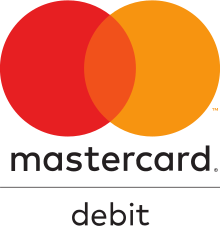Cannabis Basics
What Are Minor Cannabinoids? CBN, CBG and CBC
Learn what minor cannabinoids are and how CBN, CBC and CBG are being studied for their potential in the wellness space.
Last updated March 6, 2024 | Published on March 6, 2024

Cannabis strains contain more than 100 cannabinoids: chemical compounds that can be isolated for different uses. Cannabinoids are responsible for producing the effects you may experience from consuming cannabis.
Most people are aware of the more dominant “major” cannabinoids, delta-9-tetrahydrocannabinol, or THC, and cannabidiol, or CBD. But there are many other “minor” cannabinoids, such as CBN, CBG and CBC. Most are found naturally in the cannabis plant, but some, like THC-O, are produced synthetically or extracted from plants manipulated to produce them in higher amounts.
Understanding what minor cannabinoids are and how they act in your body can help you make informed decisions about consuming cannabis.
How do minor cannabinoids work in the body?
There’s been a lot of buzz around minor cannabinoids and how they might interact with each other and the human endocannabinoid system. The basic process involves cannabinoid receptors in the body known as CB1 (found mainly in the brain) and CB2 (mainly in the immune system). When we consume cannabis, its cannabinoids bind to these receptors and cause the effects we may feel.
Although the scientific community is still collecting evidence on the effects of minor cannabinoids, there is interest in learning more about the “entourage effect,” described by the authors of a 2021 research paper published in The Journal of Pharmacology and Experimental Therapeutics as “all of the cannabis-derived cannabinoids, terpenoids and flavonoids acting in concert.” Simply put, the entourage effect describes how cannabinoids and other compounds may work together to produce unique effects.
Are all minor cannabinoids intoxicating?
The short answer is no — not all minor cannabinoids produce intoxicating effects. Among all cannabinoids, minor and major, some are intoxicating (like THC and CBN), while others are considered non-intoxicating (such as CBD and CBC).
Health Canada uses the word “intoxicating” to refer to cannabinoids that bind to and activate CB1 receptors, which impact brain functions relating to motor control, cognition and emotional response and create an intoxicating effect or impairment. The most well-known intoxicating cannabinoid is THC, but there are many other compounds in cannabis that can cause a similar “high” or euphoria.
As research continues on cannabinoids, their classification as intoxicating or non-intoxicating may change over time.
What are the most common minor cannabinoids?
Minor cannabinoids like CBN, CBG and CBC are gaining popularity with consumers and the cannabis industry. While much more research into potential effects is needed, here’s what we know about these minor cannabinoids so far.
Cannabigerol (CBG): Non-intoxicating
Research suggests CBG may interact uniquely with the human body, including the adrenergic and serotonin receptors. Studies are looking at CBG’s potential to treat a number of neurological disorders, including Huntington’s disease, Parkinson’s disease and multiple sclerosis, as well as inflammatory bowel disease. Other research is exploring CBG’s antibacterial properties, which show some promise in treating staphylococcus aureus, a bacteria found in a range of infections, including atopic dermatitis and food poisoning.
Cannabichromene (CBC): Non-intoxicating
A minor cannabinoid that has so far eluded in-depth examination, CBC has been used in a few experimental studies that show its promise in providing anti-inflammatory relief. Other studies hint at CBC’s potential to treat ileitis — a condition commonly associated with Crohn’s disease — as well as inhibit cell growth in certain cancer lines. Many of these studies are in the beginning stages.
Cannabidiolic acid (CBDA): Non-intoxicating
CBDA is most abundant in high-CBD cannabis strains and develops into CBD as the plant ages or is heated. Unlike other cannabinoids, CBDA doesn’t bind to CB1 or CB2 receptors — instead, it interacts with the endocannabinoid system by inhibiting the cyclooxygenase-2 (COX-2) enzyme, potentially producing anti-inflammatory and analgesic effects.
Cannabidivarin (CBDV): Non-intoxicating
Discovered over 50 years ago, CBDV is structurally similar to CBD. This cannabinoid may have more effect on certain neuroreceptors and less on others in comparison to CBD, but more research is needed to understand its effects.
Cannabinol (CBN): Intoxicating
A little-studied minor cannabinoid, CBN is produced when THC oxidizes. Its concentration typically increases as the cannabis plant ages, and researchers are investigating its usefulness in regulating sleep and relaxation.
Delta-8-tetrahydrocannabinol (delta-8 THC): Intoxicating
While delta-9-tetrahydrocannabinol (commonly referred to as simply THC) is the most well-known, cannabis contains a few different intoxicating THC cannabinoids. Delta-8 THC is found in very small amounts in the cannabis plant, but it can be manufactured in larger amounts from CBD. Delta-8 THC behaves similarly in the body to delta-9, though it is thought to bind less effectively with the endocannabinoid system’s CB1 receptors, potentially causing less intense effects.
Delta-10-tetrahydrocannabinol (delta-10 THC): Intoxicating
Delta-10 has the same molecular formula as delta-9 THC but is thought to be less potent when consumed. Delta-10 THC occurs in very small quantities in cannabis, and its effects aren’t well-researched.
Delta-6a-10a-tetrahydrocannabinol (delta-6a-10a THC): Intoxicating
Also known as delta-3 THC, this cannabinoid occurs naturally in cannabis in extremely low amounts. Delta-6a-10a THC is anecdotally thought to have similarities to delta-8 and delta-10, but more research is needed to explore its potential risks or benefits.
Tetrahydrocannabinol acetate (THC-O): Intoxicating
A synthetic cannabinoid that is derived from delta-8 THC but does not occur naturally in the cannabis plant, THC-O is thought to be two to three times more potent than THC. However, little research has been done to confirm its potency, effects or safety.
Hexahydrocannabinol (HHC or HXC): Intoxicating
While this compound is chemically similar to THC, how its potency compares is under-researched. There’s currently no peer-reviewed research on its effects or safety.
Delta-9 tetrahydrocannabivarin (THCV): Intoxicating
THCV is anecdotally known for its appetite-supressing and energy-boosting properties. Research has shown it may regulate glucose in those with type 2 diabetes, but more study is needed to fully understand these possible effects.
Tetrahydrocannabiphorol (THCP): Intoxicating
Studies have found that THCP, found in naturally in cannabis in very small amounts, has the potential to be up to 33 times more potent than THC. Little research has been done on its effects in humans.
Tetrahydrocannabutol (THCB): Intoxicating
Believed to have higher potency than THC, THCB makes up less than 1% of the cannabis plant’s chemical composition. Only discovered in 2019, there is a lot we don’t know about THCB — more study is needed to understand its efficacy and safety.
Research on minor cannabinoids continues
Researchers around the world are working to better understand the potential benefits and risks of these and other minor cannabinoids, consumed on their own and in combination. A lot remains unknown about their positive and negative effects on the human body. To make informed choices about the cannabis products you consume, read the label to be aware of the THC and CBD content.







